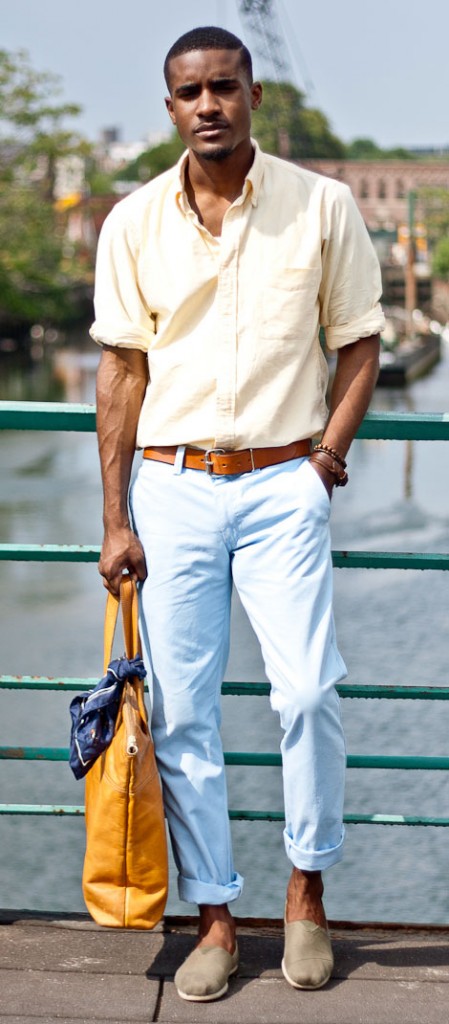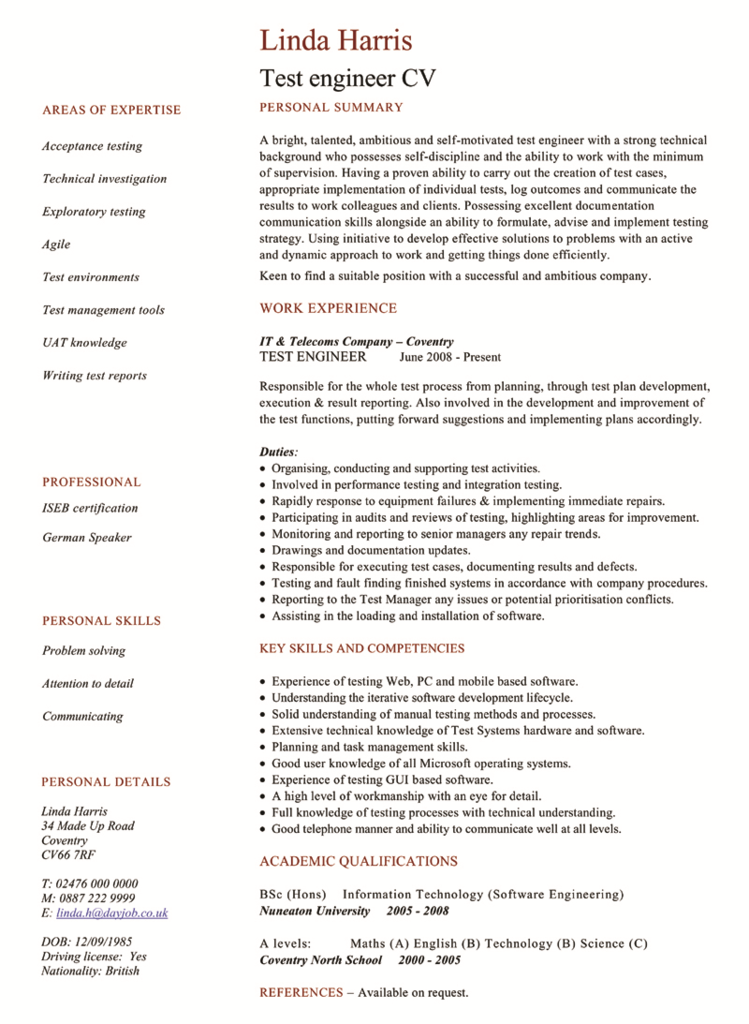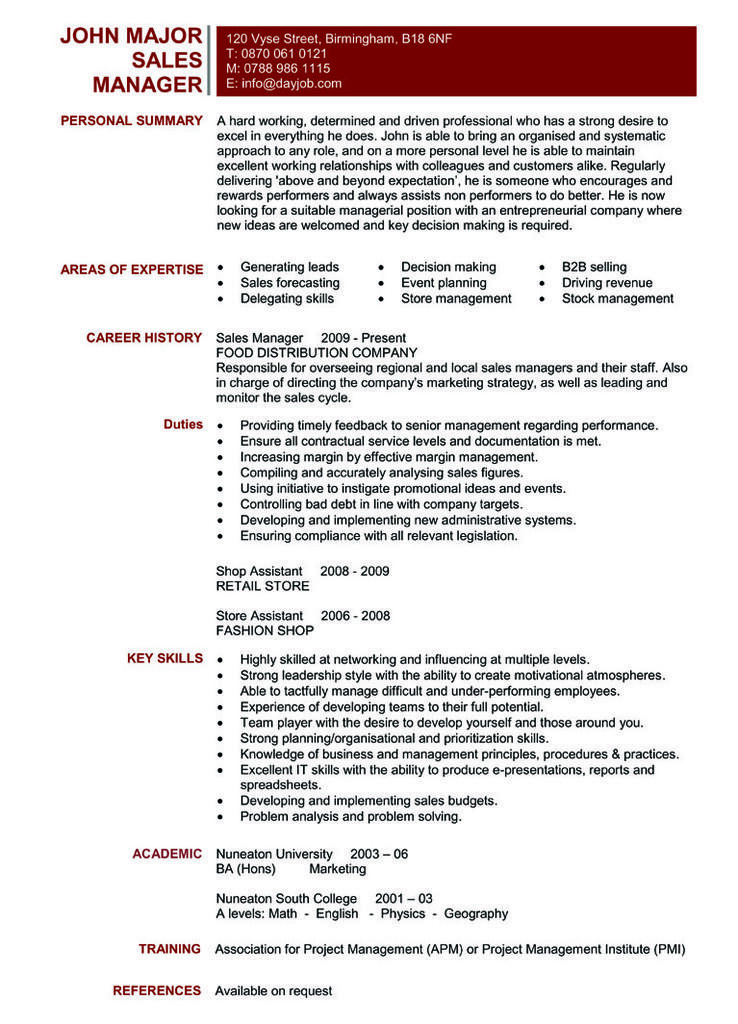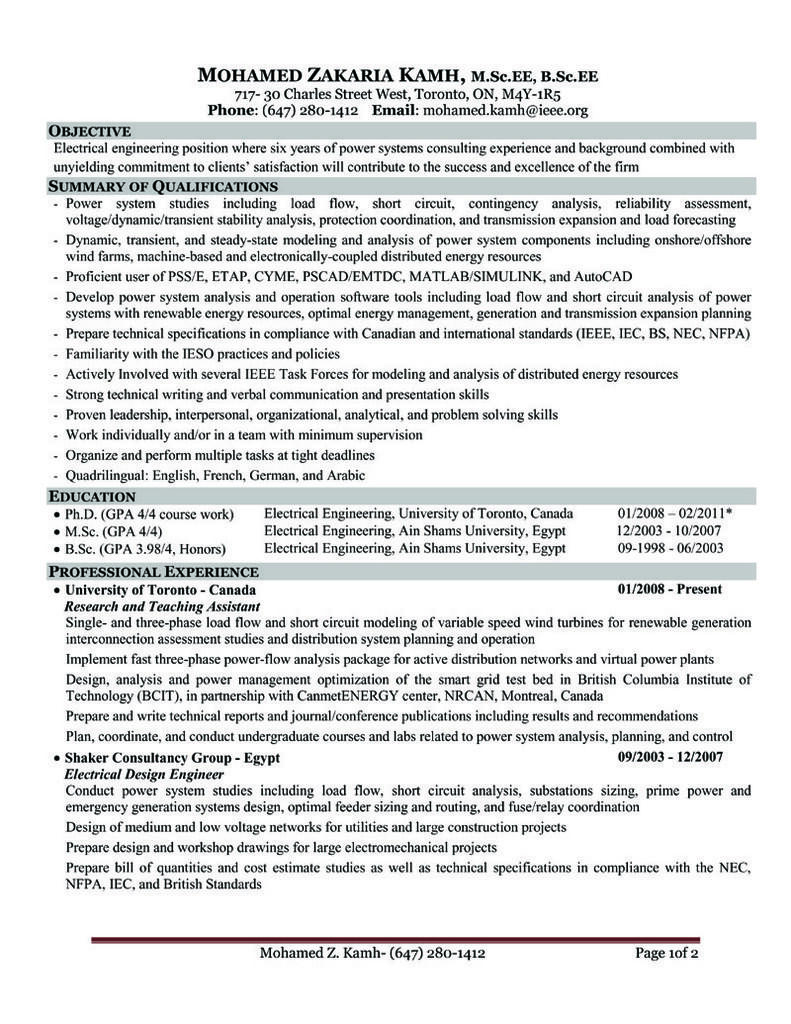Summer is a tough time in classic menswear.
Most of our most recognizable styles descended from British military and noble fashions, and the British Isles don’t face the same kinds of summer that much of the United States does, to say nothing of warmer parts of the world.
So when traditional worsted wool suits and cotton dress shirts become unbearable, what should a fashionable man wear?
We’ve seen a couple different articles and style guides for warm weather dressing, but none of them complete or detailed enough to pass for a real comprehensive resource.
This guide is our attempt at a full hot-weather clothing resource. Everything in it should be functional at temperatures into the 90s (32+ C) and even hotter. The overall style is Western, but draws on knowledge from places like South and Central America, the Middle East, and East Asia for heat-beating fabrics and garments.
Part I: Priorities
What matters when it’s hot, and what doesn’t. The things you should think about when you buy hot-weather clothing.
Looks are always important, but the line has to be drawn somewhere. When the mercury climbs up above 80 degrees (26.6 C) you need functional clothing. Consider these the most essential characteristics for hot weather menswear:
Light Weight
This should really go without saying. You want cloth that is physically light. The less ounces/grams of textile piled up on your skin, the less work you’re doing and the easier it is for air to circulate.
Wool is the only cloth that you can almost always get a weight for in specific ounces. You’ll see it for cotton and linen some of the time, but frequently you’ll need to try on a garment, or at least pick it up, to see how heavy it’s going to be.
Whenever possible, try hot weather clothes on before buying. Ten minutes of gently moving around the store or changing room will give you a very good idea of how easy it is to carry the weight. If you’re sweating after that, it’s definitely not going to be fun to wear on a hot day in the sun.
Breathability
This is just as important as light weight, if not more so!
You need air circulating over your body to stay cool. Fabric that doesn’t breathe well will trap both sweat and hot air near your skin, leading to rapid overheating.
Finer threads, looser weaves, and more porous materials all help add to a textile’s breathability. Artificial fibers are typically non-breathable, and will make a garment more likely to keep sweat and air in.
It’s hard to overstate the importance of a good weave as well as a good fabric. A lot of cheaper manufacturers will sell anything cotton as “summer wear,” regardless of whether it’s any good in hot weather or not. A tight cotton weave holds both air and moisture in — it’ll be pure torture to wear on an 80-degree day.
Sun Protection
Most men spend less time thinking about sun protection than they should. Even dark-skinned men will feel the heat more in the sun, regardless of whether their skin can burn or not, and lighter-skinned men can find themselves in a lot of pain if they’re not careful.
Happily, classic men’s styles lend themselves well to full-body protection. Long sleeves and full trouser legs can be more cooling than a T-shirt and shorts in the right conditions. Hats and sunglasses play their role as well. And light colors will reflect far more sunlight than darker shades, keeping your clothes themselves from growing warmer in the sun.
Every warm-weather outfit should include a moment or two of thought for whether it can cover more skin comfortably or not. The less direct sun you’re soaking up the happier you’ll be, so long as it can be done with light and breathable fabrics.
Deliberate Style
The trouble with most summer outfits is that they’re products of necessity, not style. You throw on shorts and a T-shirt so that you don’t overheat, not because they look good.
Looking stylish in the summer is as much about small, deliberate gestures as it is anything else. Khakis and a white shirt are comfortable, but you look like a low-level IT staffer.
When you make a summer outfit you need to be thinking about the colors, patterns, textures, and accessories all together. The difference between stylish and just functional could be as small as a different belt or the right pocket square.
But if you don’t take the time to make that small difference you just look like one more overheated office guy. So believe us when we say that style is as important an element of hot weather clothing as breathable cloth!

Part II: Good Hot Weather Fabrics
What your clothes should — and shouldn’t — be made of during the hottest months.
So how do you find clothing that combines all four of those characteristics we talked about above? Remember, you want all your outfits to combine the following:
· Light Weight
· Breathability
· Sun Protection
· Deliberate Style
That’s a lot to ask from one piece of clothing. Here, in no particular order, are the specific fabrics best suited for hot-weather outfits:
Linen
Linen is one of the joys of summer menswear. It’s light, breathable, and has a unique texture that makes it stand out in an ensemble. Some men dislike it because it wrinkles too easily, but the lightly-wrinkled texture is part of the charm of linen, and higher-quality linens are woven tightly enough that the wrinkling is minimal.
Linen can be used to make matched suits, odd jackets and trousers, and dress shirts. Traditional style manuals might tell you not to mix linens, but an unmatched jacket and trousers are usually fine. A linen shirt under a linen jacket can look a bit odd.
Pros:
· Very lightweight and breathable – often the coolest option available
· Unique texture is visibly different from the more common cotton
· Dries quickly and does not retain moisture
Cons:
· Expensive to manufacture, driving the price up
· Prone to creasing and wrinking
· Less durable than cotton or wool; can require careful maintenance
Wool
We don’t usually think of wool as a hot-weather fabric. Most of its properties make it ideal in the winter, and typical wool suitings are both thick and heavy.
There are, however, a few kinds of “tropical-weight” wools meant for summer wear. The more common kind are essentially the same worsted or flannel wool of a conventional suiting, but made with very thin, light threads to reduce weight.
An alternative technique uses a looser weave to make the wool more breathable, but twists the individual threads much tighter to compensate for the loss in strength. Fresco wool is probably the most famous example of these high-twist wools, which tend to be expensive but even lighter and more comfortable than traditional lightweight wool.
Pros:
· Neatest-looking and dressiest summer fabric
· Smoother drape and cleaner lines than linen
· More breathable and faster-drying than cotton
Cons:
· Heavier than linen or cotton
· Expensive
· Quality varies — not all “tropical-weight” wool is comfortable in the tropics!
Cotton
Most men probably rely on cotton for the bulk of their summer wardrobe. It’s light and breathable and substantially cheaper than wool or linen, so there’s some sense to that choice.
The trouble with cotton is that its performance can vary widely depending on construction. Wool fibers are actually much more airy than cotton, which means that cotton needs to be woven more loosely to let the same amount of air out. Breathable, lightweight cotton is mostly limited to specific summer weaves. Here are a few of the most common examples:
· Twill – Anyone will recognize twill weave from their blue jeans — the diagonal ribbing is very distinctive. Done in very fine threads it makes a light cloth, and is a common choice for cotton suits and jackets. There are a number of variations on the twill weave, but in general it’s used to make a garment sturdy and even. That gives it a nice drape, but can make it hot in the summer. While common (and cheap) as “summer wear,” it’s often not the best choice.
· Poplin – Poplin has a faint dimpled texture that comes from using two different sizes of threads in the weave. The dimples make tiny air pockets, making the garment much more breathable and faster-drying than a flat weave. Poplin is a common choice for higher-end polo shirts and summer dress shirts. You can also find poplin trousers (very comfortable), and even the occasional jacket.

· Seersucker – Probably the lightest cotton weave, seersucker is slow and expensive to produce but very comfortable. It has a much more distinctive dimple pattern than poplin, giving it a wrinkled appearance. Seersucker is used for shirts (usually short-sleeved), trousers, and suits, though the latter are usually not seen outside the United States.
· Madras – Madras is a specific weave, but is best known as a dyed plaid pattern. Whether it boasts the specific plaid or not it’s a lightweight summer staple used for shorts, shirts, and jackets. The surface is smoother than seersucker or poplin, but a very loose weave keeps it breathable.
· Gauze – We mostly think of gauze as a medical fabric, but this loose weave was actually used for British military wear in the tropics for many years. The individual threads are heavier than other light weaves but the weave is much loser (you can see through it if you hold it up to the light), resulting in a breathable cloth that allows moisture to evaporate quickly. It’s an uncommon but extremely comfortable choice for casual shirts.
These are only the most common examples — people have been making cotton clothes for hot climates for thousands of years. But the lighter the threads and the looser the weave, the more comfortable the cotton will be. Densely-woven cotton like oxford and broadcloth quickly become stifling in the summer, holding both sweat and body-warmed air in close to the skin.
An easy test is to simply hold a small section of the fabric up and tug it taut. Loose weaves will have stretch to them, while a tight weave like twill has relatively little give. You can also hold the weave up to a light to see how much passes through. The more see-through the cloth, the lighter and looser the weave.
Pros:
· Cheap, ubiquitous, and familiar
· Can be extremely light in the right weave
· Easiest fabric to maintain — most cotton garments can be machine-washed
Cons:
· Absorbs and retains sweat much more than wool or linen
· Lacks the smooth drape of wool or the breeziness of linen
· Tends to lose its shape and droop in humid heat — does better in dry climates
Silk
It’s hard to get fancier than silk, and in terms of strength for weight trade-off it’s an unbeaten champion. Unfortunately, the intersection of silk that’s fine enough to look good as dress clothing, sturdy enough to wear regularly, and light enough to be comfortable in the heat is hard to find.
Good summer silk needs to be woven loose enough to let air in and out. Lighter threads will make it more comfortable but also more fragile. Silk sturdy enough to make a jacket out of would be stifling in the heat — it’s best left as a material for casual, draw-string or wrap pants and the occasional loose shirt.
Pros:
· Smooth, comfortable texture feels good on bare skin
· Can make much lighter cloth than other materials
· Holds colors well and gives a distinct sheen
Cons:
· Fragile, prone to wrinkling, and difficult to maintain
· Retains moisture
· Expensive — often costs the same as much more functional cloths

Synthetics and Blends
We need to be very careful when we talk about synthetic fibers. Some are very useful in hot weather — most modern activewear and sportswear is made from proprietary fibers engineered for specific moisture-wicking and breathability properties.
However, traditional synthetic alternatives to cotton and silk like polyester are also still out there. Polyester, rayon, and their various relatives are plastic-like fibers that lack breathability. Their light weight is handy and they cost a fraction of even a plain cotton shirt, but they quickly become stifling and sweat-soaked in the heat.
Anyone who’s worn a good “underarmor” style liner shirt or underwear can attest to the usefulness of certain, specific synthetics. Avoid the older, cheaper synthetics, and the ubiquitous 50/50 cotton blends they often appear in.
Pros:
· Good synthetics can wick moisture away, making you feel less sweaty
· Extremely lightweight, often lighter than natural fibers can achieve
Cons:
· Entirely synthetic garments often lack breathability
· Can irritate the skin, particularly if the weave is fine enough to bunch up
· Often used for cost-saving rather than useful properties
Most of our most recognizable styles descended from British military and noble fashions, and the British Isles don’t face the same kinds of summer that much of the United States does, to say nothing of warmer parts of the world.
So when traditional worsted wool suits and cotton dress shirts become unbearable, what should a fashionable man wear?
We’ve seen a couple different articles and style guides for warm weather dressing, but none of them complete or detailed enough to pass for a real comprehensive resource.
This guide is our attempt at a full hot-weather clothing resource. Everything in it should be functional at temperatures into the 90s (32+ C) and even hotter. The overall style is Western, but draws on knowledge from places like South and Central America, the Middle East, and East Asia for heat-beating fabrics and garments.
Part I: Priorities
What matters when it’s hot, and what doesn’t. The things you should think about when you buy hot-weather clothing.
Looks are always important, but the line has to be drawn somewhere. When the mercury climbs up above 80 degrees (26.6 C) you need functional clothing. Consider these the most essential characteristics for hot weather menswear:
Light Weight
This should really go without saying. You want cloth that is physically light. The less ounces/grams of textile piled up on your skin, the less work you’re doing and the easier it is for air to circulate.
Wool is the only cloth that you can almost always get a weight for in specific ounces. You’ll see it for cotton and linen some of the time, but frequently you’ll need to try on a garment, or at least pick it up, to see how heavy it’s going to be.
Whenever possible, try hot weather clothes on before buying. Ten minutes of gently moving around the store or changing room will give you a very good idea of how easy it is to carry the weight. If you’re sweating after that, it’s definitely not going to be fun to wear on a hot day in the sun.
Breathability
This is just as important as light weight, if not more so!
You need air circulating over your body to stay cool. Fabric that doesn’t breathe well will trap both sweat and hot air near your skin, leading to rapid overheating.
Finer threads, looser weaves, and more porous materials all help add to a textile’s breathability. Artificial fibers are typically non-breathable, and will make a garment more likely to keep sweat and air in.
It’s hard to overstate the importance of a good weave as well as a good fabric. A lot of cheaper manufacturers will sell anything cotton as “summer wear,” regardless of whether it’s any good in hot weather or not. A tight cotton weave holds both air and moisture in — it’ll be pure torture to wear on an 80-degree day.
Sun Protection
Most men spend less time thinking about sun protection than they should. Even dark-skinned men will feel the heat more in the sun, regardless of whether their skin can burn or not, and lighter-skinned men can find themselves in a lot of pain if they’re not careful.
Happily, classic men’s styles lend themselves well to full-body protection. Long sleeves and full trouser legs can be more cooling than a T-shirt and shorts in the right conditions. Hats and sunglasses play their role as well. And light colors will reflect far more sunlight than darker shades, keeping your clothes themselves from growing warmer in the sun.
Every warm-weather outfit should include a moment or two of thought for whether it can cover more skin comfortably or not. The less direct sun you’re soaking up the happier you’ll be, so long as it can be done with light and breathable fabrics.
Deliberate Style
The trouble with most summer outfits is that they’re products of necessity, not style. You throw on shorts and a T-shirt so that you don’t overheat, not because they look good.
Looking stylish in the summer is as much about small, deliberate gestures as it is anything else. Khakis and a white shirt are comfortable, but you look like a low-level IT staffer.
When you make a summer outfit you need to be thinking about the colors, patterns, textures, and accessories all together. The difference between stylish and just functional could be as small as a different belt or the right pocket square.
But if you don’t take the time to make that small difference you just look like one more overheated office guy. So believe us when we say that style is as important an element of hot weather clothing as breathable cloth!

Part II: Good Hot Weather Fabrics
What your clothes should — and shouldn’t — be made of during the hottest months.
So how do you find clothing that combines all four of those characteristics we talked about above? Remember, you want all your outfits to combine the following:
· Light Weight
· Breathability
· Sun Protection
· Deliberate Style
That’s a lot to ask from one piece of clothing. Here, in no particular order, are the specific fabrics best suited for hot-weather outfits:
Linen
Linen is one of the joys of summer menswear. It’s light, breathable, and has a unique texture that makes it stand out in an ensemble. Some men dislike it because it wrinkles too easily, but the lightly-wrinkled texture is part of the charm of linen, and higher-quality linens are woven tightly enough that the wrinkling is minimal.
Linen can be used to make matched suits, odd jackets and trousers, and dress shirts. Traditional style manuals might tell you not to mix linens, but an unmatched jacket and trousers are usually fine. A linen shirt under a linen jacket can look a bit odd.
Pros:
· Very lightweight and breathable – often the coolest option available
· Unique texture is visibly different from the more common cotton
· Dries quickly and does not retain moisture
Cons:
· Expensive to manufacture, driving the price up
· Prone to creasing and wrinking
· Less durable than cotton or wool; can require careful maintenance
Wool
We don’t usually think of wool as a hot-weather fabric. Most of its properties make it ideal in the winter, and typical wool suitings are both thick and heavy.
There are, however, a few kinds of “tropical-weight” wools meant for summer wear. The more common kind are essentially the same worsted or flannel wool of a conventional suiting, but made with very thin, light threads to reduce weight.
An alternative technique uses a looser weave to make the wool more breathable, but twists the individual threads much tighter to compensate for the loss in strength. Fresco wool is probably the most famous example of these high-twist wools, which tend to be expensive but even lighter and more comfortable than traditional lightweight wool.
Pros:
· Neatest-looking and dressiest summer fabric
· Smoother drape and cleaner lines than linen
· More breathable and faster-drying than cotton
Cons:
· Heavier than linen or cotton
· Expensive
· Quality varies — not all “tropical-weight” wool is comfortable in the tropics!
Cotton
Most men probably rely on cotton for the bulk of their summer wardrobe. It’s light and breathable and substantially cheaper than wool or linen, so there’s some sense to that choice.
The trouble with cotton is that its performance can vary widely depending on construction. Wool fibers are actually much more airy than cotton, which means that cotton needs to be woven more loosely to let the same amount of air out. Breathable, lightweight cotton is mostly limited to specific summer weaves. Here are a few of the most common examples:
· Twill – Anyone will recognize twill weave from their blue jeans — the diagonal ribbing is very distinctive. Done in very fine threads it makes a light cloth, and is a common choice for cotton suits and jackets. There are a number of variations on the twill weave, but in general it’s used to make a garment sturdy and even. That gives it a nice drape, but can make it hot in the summer. While common (and cheap) as “summer wear,” it’s often not the best choice.
· Poplin – Poplin has a faint dimpled texture that comes from using two different sizes of threads in the weave. The dimples make tiny air pockets, making the garment much more breathable and faster-drying than a flat weave. Poplin is a common choice for higher-end polo shirts and summer dress shirts. You can also find poplin trousers (very comfortable), and even the occasional jacket.

· Seersucker – Probably the lightest cotton weave, seersucker is slow and expensive to produce but very comfortable. It has a much more distinctive dimple pattern than poplin, giving it a wrinkled appearance. Seersucker is used for shirts (usually short-sleeved), trousers, and suits, though the latter are usually not seen outside the United States.
· Madras – Madras is a specific weave, but is best known as a dyed plaid pattern. Whether it boasts the specific plaid or not it’s a lightweight summer staple used for shorts, shirts, and jackets. The surface is smoother than seersucker or poplin, but a very loose weave keeps it breathable.
· Gauze – We mostly think of gauze as a medical fabric, but this loose weave was actually used for British military wear in the tropics for many years. The individual threads are heavier than other light weaves but the weave is much loser (you can see through it if you hold it up to the light), resulting in a breathable cloth that allows moisture to evaporate quickly. It’s an uncommon but extremely comfortable choice for casual shirts.
These are only the most common examples — people have been making cotton clothes for hot climates for thousands of years. But the lighter the threads and the looser the weave, the more comfortable the cotton will be. Densely-woven cotton like oxford and broadcloth quickly become stifling in the summer, holding both sweat and body-warmed air in close to the skin.
An easy test is to simply hold a small section of the fabric up and tug it taut. Loose weaves will have stretch to them, while a tight weave like twill has relatively little give. You can also hold the weave up to a light to see how much passes through. The more see-through the cloth, the lighter and looser the weave.
Pros:
· Cheap, ubiquitous, and familiar
· Can be extremely light in the right weave
· Easiest fabric to maintain — most cotton garments can be machine-washed
Cons:
· Absorbs and retains sweat much more than wool or linen
· Lacks the smooth drape of wool or the breeziness of linen
· Tends to lose its shape and droop in humid heat — does better in dry climates
Silk
It’s hard to get fancier than silk, and in terms of strength for weight trade-off it’s an unbeaten champion. Unfortunately, the intersection of silk that’s fine enough to look good as dress clothing, sturdy enough to wear regularly, and light enough to be comfortable in the heat is hard to find.
Good summer silk needs to be woven loose enough to let air in and out. Lighter threads will make it more comfortable but also more fragile. Silk sturdy enough to make a jacket out of would be stifling in the heat — it’s best left as a material for casual, draw-string or wrap pants and the occasional loose shirt.
Pros:
· Smooth, comfortable texture feels good on bare skin
· Can make much lighter cloth than other materials
· Holds colors well and gives a distinct sheen
Cons:
· Fragile, prone to wrinkling, and difficult to maintain
· Retains moisture
· Expensive — often costs the same as much more functional cloths

Synthetics and Blends
We need to be very careful when we talk about synthetic fibers. Some are very useful in hot weather — most modern activewear and sportswear is made from proprietary fibers engineered for specific moisture-wicking and breathability properties.
However, traditional synthetic alternatives to cotton and silk like polyester are also still out there. Polyester, rayon, and their various relatives are plastic-like fibers that lack breathability. Their light weight is handy and they cost a fraction of even a plain cotton shirt, but they quickly become stifling and sweat-soaked in the heat.
Anyone who’s worn a good “underarmor” style liner shirt or underwear can attest to the usefulness of certain, specific synthetics. Avoid the older, cheaper synthetics, and the ubiquitous 50/50 cotton blends they often appear in.
Pros:
· Good synthetics can wick moisture away, making you feel less sweaty
· Extremely lightweight, often lighter than natural fibers can achieve
Cons:
· Entirely synthetic garments often lack breathability
· Can irritate the skin, particularly if the weave is fine enough to bunch up
· Often used for cost-saving rather than useful properties





































